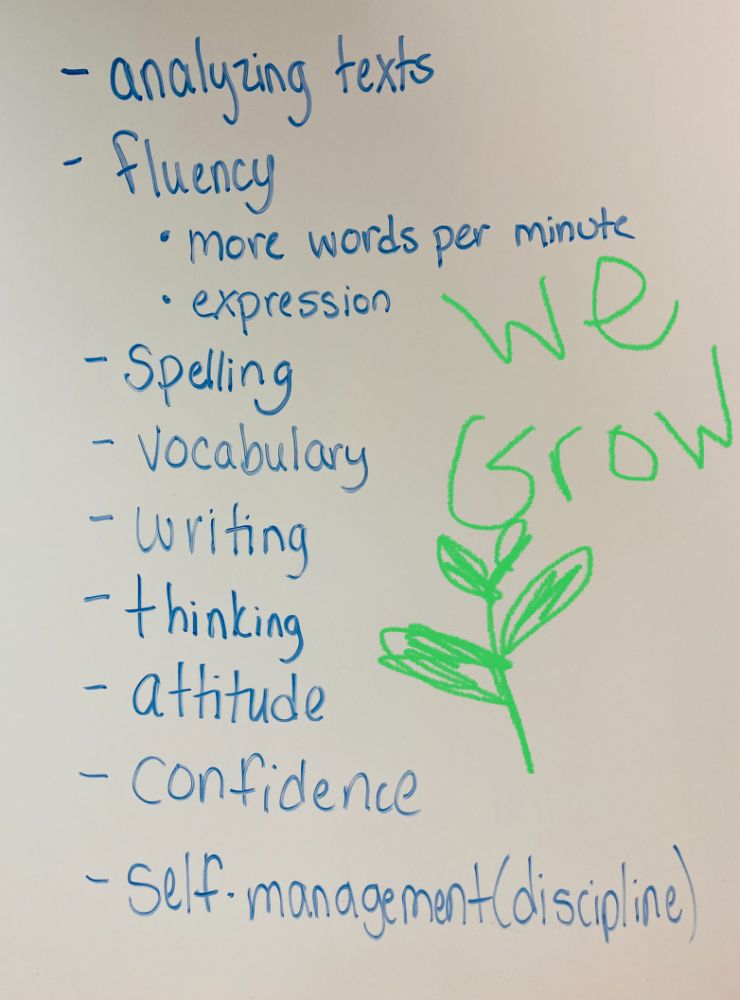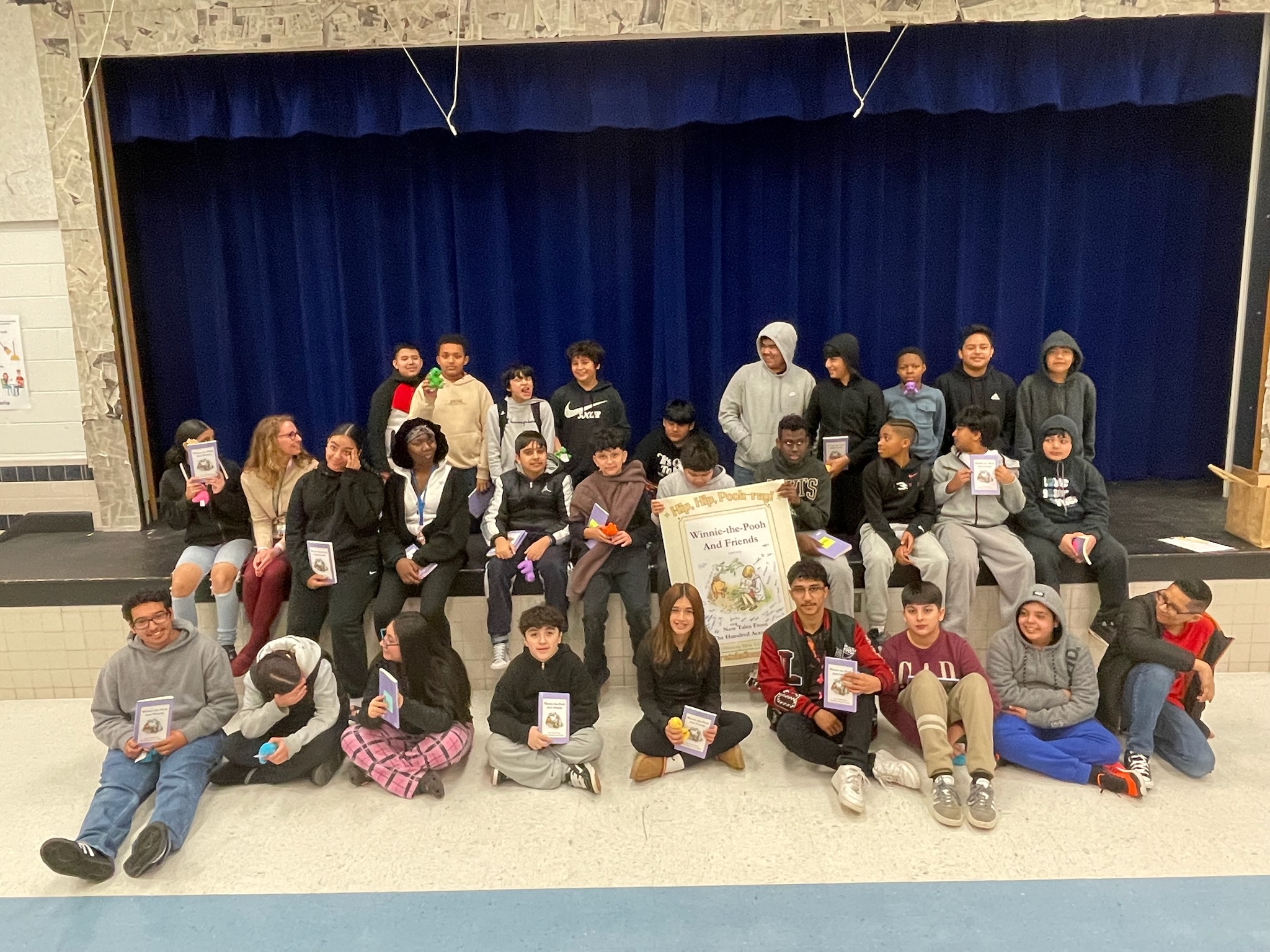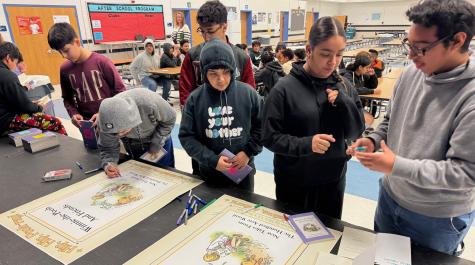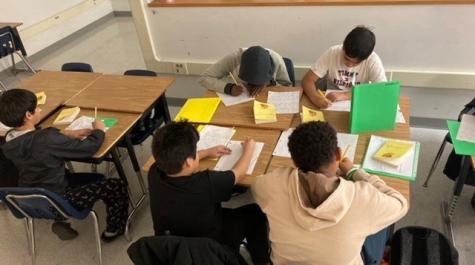Literacy leadership empowers middle school students
When Rachael Von Elmendorf Cert '26 transitioned from teaching middle school science to leading a Tier 3 literacy intervention class, she quickly realized her students needed more than a scripted, one-size-fits-all reading program. Armed with tools and strategies from William & Mary’s Literacy Leadership program, Von Elmendorf responded to her students’ frustration and disengagement with creativity, care and a research-based approach. Drawing from her graduate coursework and district LETRS training, she created a responsive curriculum with explicit phonics instruction, fluency-building strategies and meaningful writing opportunities. As she transformed her instruction to align with the Science of Reading, Von Elmendorf saw her students making measurable progress and building confidence.
 “Students had spent years in interventions that weren't working. They were dejected, miserable and completely resistant to spending more hours on the district's computer-based comprehension program," said Von Elmendorf. "They thought they were unintelligent. They'd given up trying. They needed a sense of purpose, high expectations and the opportunity to grow as a community.”
“Students had spent years in interventions that weren't working. They were dejected, miserable and completely resistant to spending more hours on the district's computer-based comprehension program," said Von Elmendorf. "They thought they were unintelligent. They'd given up trying. They needed a sense of purpose, high expectations and the opportunity to grow as a community.”
Von Elmendorf noted that the district’s plan to help remediate students who were falling behind in reading was a solid one, but the program failed to address key skills the students were lacking.
“The students were placed in a comprehension intervention because they failed the SOL, but they lacked phonics, vocabulary, reading and writing fluency. The purchased program did not do enough to address these foundational skills. It was scripted – not flexible nor student-centered,” said Von Elmendorf, who has pushed for student placement to be determined by diagnostic data.
At this stage, Von Elmendorf’s graduate coursework came into play. As a student in the Reading Specialist certificate program, her courses revealed there was more to effective literacy instruction than what she was seeing all around her, and it was her duty to model, coach, educate and advocate for a change in practice to push her students and hopefully reignite their spark for reading. Using the knowledge and resources gained from her time with Clinical Instructor of Literacy Education Tamara Williams, Von Elmendorf started creating lesson plans tailored to her students based on the text they were reading.
“Tammy’s course helped me realize my district's intervention program wasn't meeting the needs of my students. We started reading “Winnie-the-Pooh,” and I built my lessons around the text, focusing on word recognition, fluency and comprehension. At the end of the quarter, students started seeing so much academic and behavioral growth.”
Professor Denise Johnson also had a profound impact on how Von Elmendorf taught her students. In her time with Johnson, Von Elmendorf realized that implementing writing into the lesson plans was essential to building literacy. To put what she had been learning in Johnson’s class into practice, she assigned her students to write their own “Winnie-the-Pooh” adventures.
 "We finished “Winnie-the-Pooh” after Thanksgiving and spent three weeks writing our own Pooh stories. These were kids who couldn't write a sentence or read a paragraph in August, writing their own stories based on a book they'd actually read. I just broke down the process like Denise taught us, using mini-lessons, conferencing and lots of peer feedback. The students did the work,” she said.
"We finished “Winnie-the-Pooh” after Thanksgiving and spent three weeks writing our own Pooh stories. These were kids who couldn't write a sentence or read a paragraph in August, writing their own stories based on a book they'd actually read. I just broke down the process like Denise taught us, using mini-lessons, conferencing and lots of peer feedback. The students did the work,” she said.
“Rachael’s work is a beautiful example of what we hope for in every teacher who comes through our literacy programs,” said Johnson when Von Elmendorf updated her about the students’ success and enthusiasm. “She saw her students as capable, chose meaningful texts, and used everything she learned to build a space where reading and writing felt real and joyful. Watching her take that leap—and seeing the pride and growth in her students—reminds me why we do this work. It’s about trust, courage and believing in what kids can do.”
Von Elmendorf was so proud of her students’ work that she decided to publish their stories into a collective novel. She explained that she felt the students showed such humor, empathy, creativity, drama and a deep understanding of the book’s characters that their work needed to be shared. This idea was so well received by her students, administrators and the community that they eventually threw a book launch party. Each student received a copy of the book, and copies were also made available in the library, via purchase by the administration. Students had the opportunity to sign their work for all to enjoy.
Williams reflected on how much she appreciates seeing the tools she teaches being immediately put into action.
“It's one thing to teach research-based literacy practices, but it's another to see them come to life in the classrooms of the teachers in the program," she said. "Rachael is truly changing the trajectory of achievement for her students. By embracing what she's learned in her coursework, Rachael has turned her students into published authors! Knowing that the immediate application of her coursework is sparking conversations and shifting mindsets makes me feel both honored and inspired. I'm truly grateful she took the time to share with us, and I feel lucky to be a small part of her journey.”

